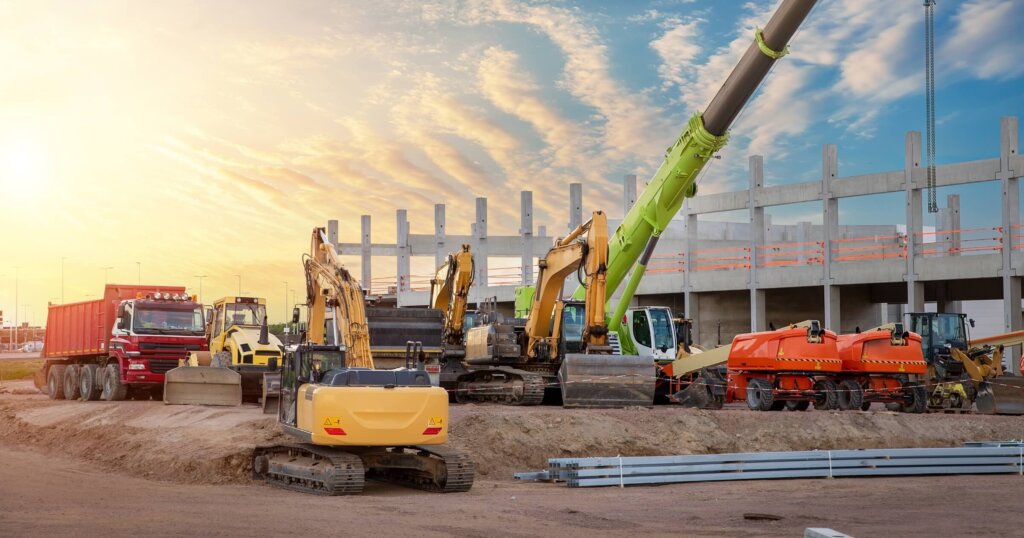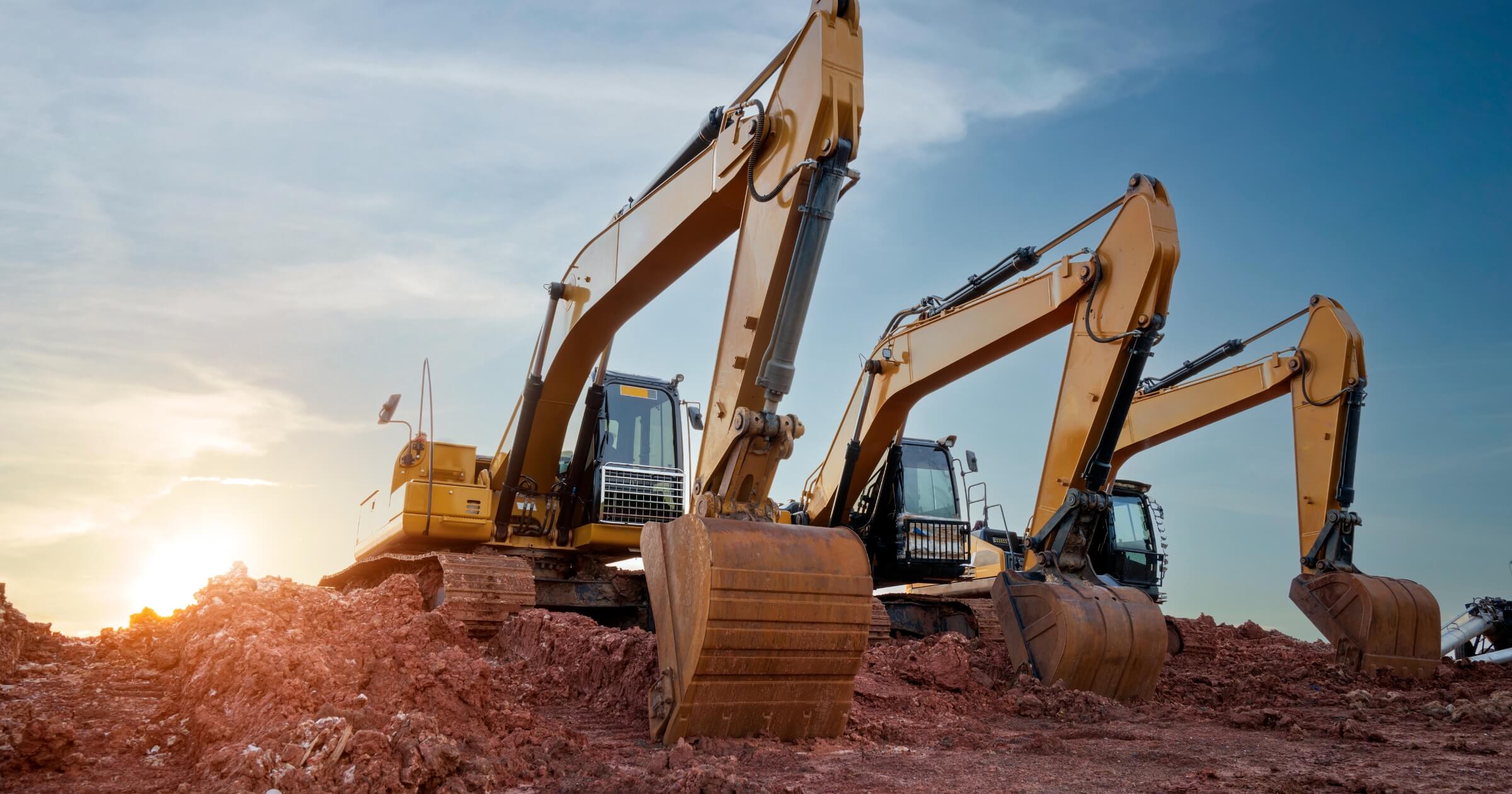Working around heavy machinery is an everyday reality in construction, engineering, and industrial work. Excavators, cranes, bulldozers, and other large equipment make tasks more efficient but also introduce serious hazards. A single mistake can lead to catastrophic injuries or fatalities. Some of the best ways to stay safe include maintaining clear communication, wearing the right protective gear, and respecting equipment limits.
Quick look
- Heavy machinery, such as excavators and cranes, increases efficiency but requires strict safety protocols to prevent accidents.
- OSHA reports that machinery-related incidents contribute to hundreds of worker fatalities annually, emphasizing the need for proper training.
- PPE like hard hats, safety glasses, and steel-toe boots reduce injury risks, while spotters and clear communication help prevent blind spot accidents.
- Pre-operation equipment inspections and maintaining situational awareness are key to avoiding malfunctions and on-site hazards.
What is heavy machinery and why is safety important?

Heavy machinery includes large, powerful equipment used in construction, manufacturing, mining, and other industries. This includes bulldozers, forklifts, backhoes, cranes, and dump trucks, all of which pose serious risks when not handled correctly. Even experienced operators must stay vigilant, as distractions or misjudgments can have severe consequences.
According to the Occupational Safety and Health Administration (OSHA), caught-in or caught-between accidents are one of the “Fatal Four” hazards in construction, often involving heavy machinery. The Bureau of Labor Statistics (BLS) reports that heavy machinery-related incidents contribute to 800 fatalities each year and up to 18,000 suffer a life-altering injury. Heavy machinery safety can be improved with proper safety protocols, training, and regular inspections.
Best practices for working around heavy machinery
Heavy machinery requires careful handling and strict safety measures. Following these best practices reduces risk and helps create a safer work environment.
Ensure proper training and certification
Workers who operate different types of machinery must receive specialized training for each piece of equipment. A crane operator, for example, requires different skills and certifications than someone operating a forklift. Employers should ensure that every operator holds the necessary licenses and complies with OSHA and industry regulations. Training programs generally include theory, hands-on practice, and safety drills, all of which help trainees to operate heavy machinery safely.
Wear appropriate personal protective equipment (PPE)
Personal protective equipment (PPE) minimizes the risk of injury in high-risk environments. The type that is required depends on the machine being used. In general, most workers should wear hard hats to prevent head injuries, safety glasses to protect against debris, and steel-toe boots to guard against crushing hazards.
Perform pre-operation equipment inspections
Before using heavy machinery, operators should conduct a thorough inspection. This includes checking hydraulic systems for leaks, ensuring brakes and safety alarms function properly, and confirming all attachments are secure. Worn-out parts, frayed cables, and low fluid levels should be addressed immediately to prevent malfunctions that could lead to accidents.
These inspections should be documented, with any identified issues reported and repaired before operation. A failure to inspect machinery properly can result in equipment breakdowns or dangerous failures mid-operation. Operators should also check for environmental hazards, such as uneven terrain or overhead obstructions, before starting a job.
Establish safe work zones and clear boundaries
Heavy machinery blind spots are a major cause of workplace accidents. While operators should be aware of pedestrian traffic, it’s not always possible as blind spots can get in the way. That’s why work zones should be marked to keep unauthorized personnel away from dangerous areas. Barriers, cones, and signage help define these zones. In addition, using safety markers to create designated walkways is an easy way for foot traffic to remain separate from the working equipment.
Use spotters and communicate effectively
Spotters help heavy machinery operators avoid making mistakes due to blind spots. They guide operators through hand signals or radios. Workers should establish a standardized set of signals and confirm they are understood before beginning operations. Background noise from machinery can make verbal communication difficult, so visual signals should be practiced regularly. If visibility is poor, additional safety measures like radios or lighted signals should be used.
Maintain situational awareness of surroundings
Unexpected hazards, such as moving vehicles, changing weather, or shifting loads, require quick decision-making. Maintaining situational awareness in these moments helps prevent accidents from occuring. This can mean anything from machine operators checking their surroundings before moving to workers and pedestrians keeping their eye on the machines direction. It also means avoiding distractions such as using a phone while on-site.
Essential safety equipment to have on-site
First aid kits
First aid kits are the first line of defense against any injuries. They should be stocked with bandages, antiseptics, burn treatments, and splints to handle common injuries. When serious injuries occur, first aid equipment could be the difference between keeping a worker from dying before the ambulance arrives.
Workers should know where kits are located and be trained in basic first aid. Having an easily accessible first aid station can prevent minor injuries from becoming major medical issues. Kits should be inspected regularly to replace expired supplies.
Fire extinguishers
Machinery malfunctions and fuel leaks can lead to fires. Fire extinguishers should be readily available to put out these fires, and workers should be trained in their use. Each type of fire extinguisher is designed for specific hazards, such as electrical fires or flammable liquids. Having the correct extinguisher type for each area reduces the risk of ineffective suppression during an emergency.
Personal heavy machinery safety gear
Every worker on-site should have the proper safety gear. Each piece of safety gear serves a specific function and should be chosen based on the hazards present in the work environment.
- Safety glasses: Safety glasses protect the eyes from flying debris, dust, and chemical splashes, which are common hazards when working with heavy machinery. Workers should wear safety-rated glasses or goggles that meet ANSI Z87.1 standards. Anti-fog and scratch-resistant coatings can improve visibility in challenging conditions.
- Hard hat: A hard hat prevents head injuries from falling objects, low-hanging structures, or accidental impacts. Many hard hats are designed with shock-absorbing suspension systems to reduce the impact force of falling debris, but they can become faulty with wear and tear. Workers should inspect their helmets regularly for cracks, dents, or other signs of wear that could compromise protection.
- High-visibility work vest: Reflective materials improve visibility in low-light conditions, such as early morning or evening shifts. Workers should wear vests that meet ANSI/ISEA 107 standards, ensuring they provide the necessary level of reflectivity and coverage. Bright colors like neon yellow or orange enhance visibility even in daylight, making it easier for machine operators to identify personnel on-site.
- Work gloves: Work gloves protect hands from cuts, abrasions, and punctures while improving grip and dexterity when handling tools and materials. The right type of glove depends on the specific job—cut-resistant gloves are ideal for working with sharp materials, while insulated gloves protect against electrical hazards. Workers should choose gloves that balance protection with flexibility, ensuring they can perform tasks safely without losing hand mobility.
- Steel toe boots: Steel toe boots shield feet from heavy objects, crushing hazards, and punctures from sharp materials on the ground. They are a requirement when working in any construction job or with heavy machinery. Many models also feature slip-resistant soles to reduce the risk of falls on slick surfaces. Workers should make sure they have properly fitted boots to improve comfort and support for long shifts.
Final thoughts
Safety around heavy machinery requires proper training, the right equipment, and a commitment to best practices. By staying alert, having the right safety equipment on site, and following safety guidelines, workers can reduce the risk of injuries around heavy machinery.
If you enjoyed this article and want to stay updated on the latest construction safety practices, subscribe to our newsletter at Under the Hard Hat to get these insights delivered straight to your inbox.



1 comment